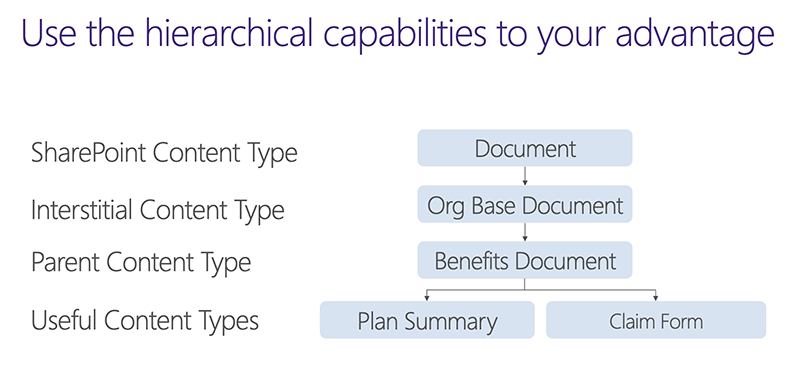Content Types and Document Templates
Episodes in the Microsoft 365 Templates Series
- Template Overview
- Content Types and Document Templates
- Page Templates
- Site and List Templates
- Teams Templates
This session the team focuses specifically on content types and document templates. Within the Microsoft ecosystem, we must emphasize their role in ensuring repeatability, maintaining consistency, and encapsulating institutional knowledge.
Content types as templates
Content types are defined as collections of structured or unstructured data representing business objects, for example: benefits, contracts, and vacation requests. Content types play a crucial role in defining these entities and the associated data, enabling the creation of intricate hierarchies of content.
When building content types, we often get asked when and why do you create them. The team delves into this question while highlighting different scenarios where an object can be named, and different metadata needs to be captured.
Information architecture approaches
Information architecture consists of three levels - local, site, and enterprise. While you can build content types at the local level, those can never be used in a different site. Therefore, we suggest that when in doubt, it is always better to build at a higher level.
Content type inheritance
All content types in SharePoint start from an item. This is the foundational structure that underlies all content types in SharePoint. Item starts with one field attached to it, which is “title”. SharePoint content types also include four system-managed fields: created, created by, modified, and modified by. When a content type is inherited from another, it incorporates the fields and characteristics of its parent content type. The “document” content type is inherited from the “item” content type. The “document” content type introduces additional fields for “name” and “file”.

We also always suggest including an “interstitial” content type which can be viewed as an organizational base. This facilitates the ability to search for all the organization documents on the intranet. In general, content types and metadata are a huge benefit in relation to ease of search. They reduce friction for the users by enabling contextual filtering in search and embedding content within pages.
Document templates
When it comes to uploading, updating, and using document templates in Word, Excel, and PowerPoint there are quite a few user experience nuances. Also, uploading via a relative path to the content type hub and a relative path to a library also have varying challenges. Julie dives deep into the experience of each method and which did and did not work as expected.
We highly suggest leveraging document templates and content types strategically within Microsoft for efficient document management and the retention of organizational knowledge. However, it is crucial to navigate the nuances and adhere to tailored approaches, ensuring the creation of an effective structure. Join as we continue our template discussion on Wednesday, January 24th as we dive into page templates.
All Resources
- contentType: getCompatibleHubContentTypes
- contentType: addCopyFromContentTypeHub
- Get-PnPSiteScript | PnP PowerShell
- Add-PnPSiteDesign | PnP PowerShell
Do you have any questions for us? Continue the conversation on Twitter with the hashtag #AskSympraxis and mention @SympraxisC.